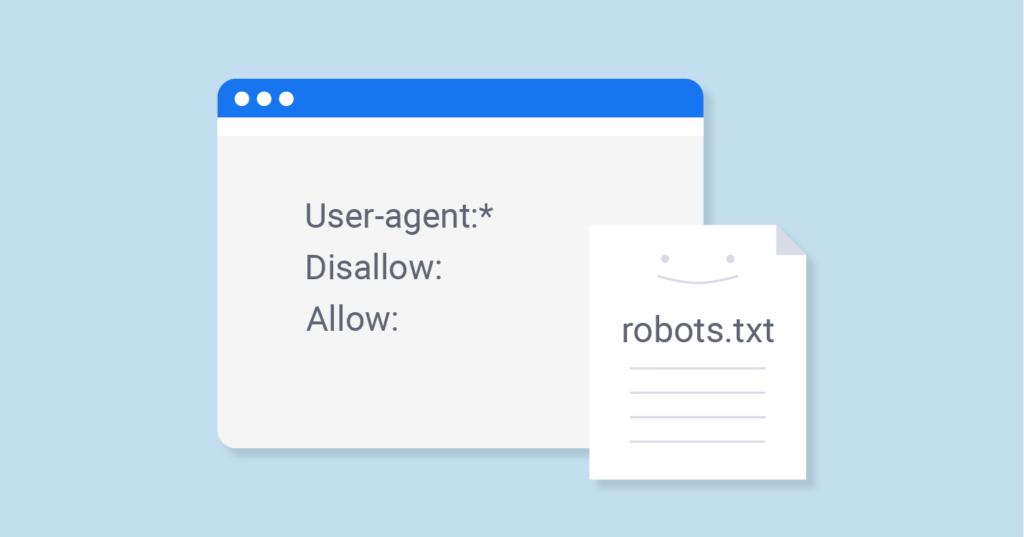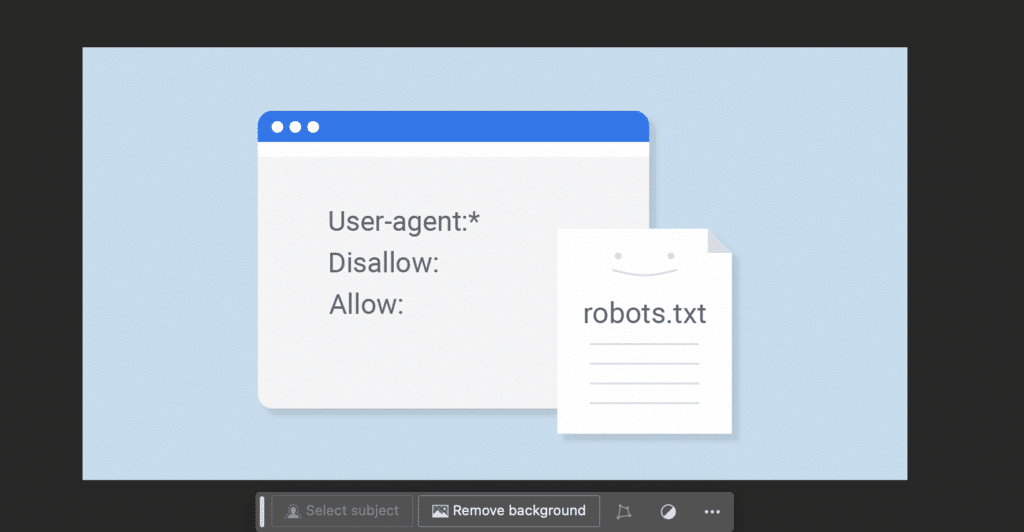
Implementing SEO Best Practices in Web Development
Table of Contents
TLDR
The Hidden SEO Cost of Developer Convenience
Modern web builds are often fast, beautiful, and technically clever, but they quietly break search visibility. When developers prioritise frameworks, speed, and UX without SEO baked in, the result is clean code that Google can’t crawl, content it can’t index, and pages it won’t rank.
This article unpacks how:
- JavaScript-heavy builds often deliver blank shells to Googlebot
- Metadata, headings, and alt text are missed or duplicated
- Internal linking and sitemaps are neglected, leaving pages orphaned
- WordPress defaults create index bloat unless manually corrected
- Mobile-first designs hide content or tank performance scores
- Localisation without hreflang or unique content fragments authority
The cost? Lower rankings, less organic traffic, higher reliance on paid media, and lost growth.
Founders and marketers: don’t assume SEO is handled just because the site is live. Visibility must be built in from day one. Ask harder questions. Demand outcomes, not just deliverables.
And if you’re unsure whether your current site is helping or hurting search, get a second opinion before you spend another pound driving traffic to a site Google can’t find.
Listen to the Article
The SEO Debt You Didn’t Know You Were Building

Understanding the Vital Role of SEO in Web Development
“It looks incredible.”
That’s what the client said when we launched. Clean lines, bold imagery, a seamless interface that worked across devices. But six weeks in, traffic was flat. Organic discovery had cratered. The site hadn’t just underperformed, it had become invisible.
And here’s the thing: we’d seen it before.
When speed trumps substance and dev workflows chase convenience, businesses unknowingly take on an SEO debt, a hidden cost that quietly compounds with every “efficient” choice.
The Price of Convenience
Modern web development makes it dangerously easy to build something that looks exceptional but performs poorly in search.
- Client-side rendering that hides content from crawlers
- Fancy JavaScript interactions that collapse under Googlebot
- Image-led design that forgets image alt text or semantic structure
- Consent banners that hijack your Largest Contentful Paint
It’s not malicious. It’s often not even careless. It’s just a byproduct of teams optimising for the wrong outcome, shipping, not surfacing.
“If users can’t find your website in search, your design doesn’t matter.”
This is where search engine optimisation (SEO) must stop being a post-launch patch and start being a principle baked into development culture.
Visibility Is a Build Time Responsibility
Your site doesn’t exist in a vacuum. It exists in an ecosystem shaped by search engines, user intent, and algorithmic interpretation. If your content isn’t structured to be seen, parsed, and indexed, it’s effectively silent.
Google doesn’t care how clever your animations are. It cares whether your site answers the query, fast, cleanly, and clearly.
That’s why SEO best practices in web development aren’t optional extras. They’re foundational pillars that impact:
- How search engines crawl your site
- Whether your content enters Google’s index
- How your pages rank against competitors
- How users engage when they land there
And when they’re ignored, everything else suffers: rankings, reach, revenue.
E-E-A-T Starts Here
Google’s ranking systems increasingly lean into E-E-A-T, Experience, Expertise, Authoritativeness, and Trustworthiness. And while content is core to that, your technical integrity is its enabler.
- If your pages don’t render properly in a user’s browser, Google won’t see experience.
- If your content can’t be crawled due to JavaScript overuse, there’s no expertise to analyse.
- If your site is slow, fragmented, or inconsistent, trust erodes before the first scroll.
E-E-A-T isn’t just about what you say. It’s about how reliably you say it, and whether it shows up at all.
• • •
Everyone Loves the Launch, Until Google Goes Silent

“This build is stunning. Why aren’t we ranking?”
That’s the question founders ask, right after spending tens of thousands on a gorgeous new site that Google barely acknowledges. The answer? It was built for the user’s eye, not the crawler’s logic.
In the sprint to launch, many web development teams optimise for internal velocity: frameworks they know, components they can reuse, plugins that speed things up. But the invisible consequence is often this: Google doesn’t see what the user sees.
And if Google can’t see it, it won’t rank it.
When Beautiful Builds Don’t Translate
This is where the hidden SEO cost really starts to show. Here’s what typically goes wrong under the hood:
- Client-side rendering delays meaningful content, so Googlebot bounces before the page is useful.
- Fancy transitions and lazy loading hide important copy behind scroll events or buttons Google won’t trigger.
- Dynamic meta tags or titles injected via JavaScript often get missed entirely unless rendering is server-side.
- Routing in SPAs (Single Page Applications) confuses crawlers unless carefully configured.
Your search engine rankings don’t just depend on having great content. They depend on how, and when, that content is delivered.
“It’s not just about what loads. It’s about what loads first, and what Google sees without asking.”
Developer Priorities ≠ Search Engine Priorities
Let’s break it down.
The developer is focused on usability, animation, and speed for the end-user. The search engine is focused on parsing, hierarchy, and indexability. The two aren’t in conflict, but they aren’t automatically aligned either.
And when developer convenience becomes the guiding light, technical SEO best practices are often left behind.
Things like server-side rendering, semantic markup, and accessible image alt text fall by the wayside in favour of faster deployments and cleaner codebases. But that trade-off can be brutal. What you gain in speed, you lose in search visibility, and with it, the organic traffic that drives growth.
“We built a beautiful experience. But from Google’s perspective, it was a blank canvas.”
If your own website isn’t structured with SEO in mind from the first sprint, you’re not just delaying performance, you’re handing the advantage to other websites with less impressive builds but better optimisation. A few hours of extra setup can mean the difference between silence and search results.
Because if the structure doesn’t make sense to a crawler, it doesn’t matter how good the content is. Google won’t rank what it can’t understand.
And that’s not just a technical problem. It’s a business one.
• • •
How ‘Modern’ Builds Break Organic Discovery

“We built it in Next.js, so why can’t anyone find it?”
That question lands more often than it should. The new site looks great. The devs are proud. The interface is slick and the performance metrics are green. But Google is still quiet. No uplift. No discovery. No movement.
And that’s because most modern build stacks prioritise the developer’s experience, not the search engine’s.
The Invisible Shell Problem
Most JavaScript-heavy sites ship content dynamically, after the page loads. That means crawlers often hit an empty or incomplete HTML shell. The real substance, the stuff users see, is hidden behind layers of JavaScript that Google may not fully render, especially on a second crawl pass.
It’s not that search engines can’t crawl JavaScript. It’s that they don’t always wait around to try.
So what you end up with is a web application that looks flawless to a user on their browser, but looks like one page of vague code to a crawler.
And if it looks like one page, it gets treated like one page.
“We thought it was beautifully built. Google thought it was broken.”
This is especially true with Single Page Applications. Without server-side rendering or proper hydration, internal routing isn’t crawlable. You might have 100 screens, but search engines only see one URL. And when that happens, your pages vanish from the search engine results.
Even the basics go missing. Page titles. Meta descriptions. Anchor text. Structured headings. All the things that tell Google what each page is about and where to place it in its index—they’re often rendered too late, or not at all.
Clean Code, Broken Crawl
Developer-focused tools often create unintended consequences:
- Lazy loading that hides content behind scroll events
- Cookie banners that dominate the Largest Contentful Paint
- Overreliance on dynamic routes with no sitemap support
- Duplicate content across filters or parameters with no canonical strategy
In theory, these builds are modular, efficient, and “up to date.” But in practice, they confuse crawlers, fragment internal linking, and introduce duplicate content across versions of the same page.
“It was optimised for users. But it didn’t tell Google anything.”
The cost isn’t just technical. It’s commercial. Sites built this way often attract fewer users, lose their organic traffic edge, and rely more heavily on paid media to fill the gap.
And that’s avoidable, if you design your stack to work for search engines from day one.
Because in modern web development, the stack you choose isn’t just a dev decision. It’s a visibility decision. It’s a revenue decision. It’s a search engine optimisation decision.
• • •
The Visual Trap: When Beautiful Kills Search

“It looks like a dream. But it ranks like a disaster.”
When sites are designed to impress stakeholders, not search engines, you get image-heavy homepages, zero crawlable text, and UX that wins awards but loses customers. The end result? A search engine sees the shell, not the story.
The Overdesign Problem
Designers love clean, minimal interfaces. Developers love shipping with reusable components. The result is often a homepage with three lines of text and a carousel of high-res images. No structured headings. No unique titles. No context for crawlers.
What looks polished to a user is often unreadable to search engines.
“We wanted impact. But we forgot to give Google a reason to care.”
This is where technical SEO gets undermined by aesthetics. We’ve seen it first-hand. A client comes to us with a visually stunning new website, and a 30% drop in organic traffic. No image alt text. No semantic layout. No meaningful anchor text in the nav.
Google saw a glossy brochure. Not a website.
Case in Point: Orbus Software
When Orbus came to us, their old site was cluttered, template bound, and visually tired. But it ranked. Their new redesign, however, had stalled. Pages weren’t performing. Search traffic had dipped. They’d swapped function for beauty, and the index paid the price.
We rebuilt it with purpose. A component-based design system that made content easy to structure. Clear headers. Search-focused landing pages. A flexible CMS that respected internal linking and metadata hierarchy.
The result? A visually elevated brand presence and a measurable improvement in organic reach. The work looked great, but more importantly, it worked.
The Image SEO Most Teams Ignore
Here’s what gets skipped in most builds:
- Descriptive alt text that explains visual assets
- Structured markup for other media like video or infographics
- Semantic HTML5 elements that group content for parsing
- Contextual captions and real copy instead of flat visual labels
“The hero image was perfect. But there was no text. It was just decoration to Google.”
This is where founders and content teams need to push back.
It’s not enough to showcase a strong visual identity. You have to provide real, indexable content. That means creating content for both human visitors and search engines, without compromise.
Catch: Designed for Anglers, Built for Search
When we redesigned the Catch app landing pages, every section had a job to do. Real screenshots. Searchable captions. Structured HTML. Contextual FAQs optimised for different keywords and long-tail queries. We didn’t just highlight new features, we made sure Google could index them properly.
That approach helped Catch rank for highly specific fishing terms, even with a relatively new domain name. Traffic increased by 32% after launch. More importantly, those pages converted, because users weren’t just wowed by visuals. They found what they were looking for.
Design isn’t the enemy of SEO. But done carelessly, it can undermine everything good content tries to do.
“If it looks good but Google can’t read it, it’s decoration, not strategy.”
• • •
Meta-Lite Builds: The Silent SEO Sabotage

“We launched. We indexed. We didn’t climb.”
That’s the quiet frustration you hear from teams who tick the SEO basics, then still watch competitors overtake them. More often than not, the issue isn’t content or even links. It’s missing metadata. And it’s shockingly common in modern builds.
The Metadata That Makes You Visible
Titles, meta descriptions, canonical tags, structured data, these aren’t optional. They’re the language search engines read before they even consider ranking your content.
“Metadata is the invitation. Without it, your content doesn’t get into the room.”
But in JavaScript-led workflows or CMS-heavy sites, metadata gets pushed down the list. Injected too late. Left to plugins. Or worse, duplicated across every page.
That’s when Google starts to guess. And when Google guesses, you don’t get higher rankings—you get irrelevant ones.
The Mistakes We See Weekly
- Dynamic title tags missing or duplicated across multiple pages
- Meta descriptions rendered via JavaScript (and missed entirely)
- Pages with identical H1s but different content
- Canonicals pointing to outdated URLs, or nowhere
- Thin, boilerplate descriptions that add no value
It only takes a few of these for search engines to hesitate. And when they do, your visibility flatlines.
Case in Point: Korda
When we started working with Korda, their organic footprint didn’t reflect the strength of their brand. They were well known among anglers. But their pages weren’t performing, despite great content and a loyal audience.
The issue? Metadata gaps and conflicting signals.
Product pages had overlapping titles. Important categories were missing meta descriptions. Canonical tags were inconsistent. And their internal link structure was shallow.
We fixed it at the foundations, clean titles, unique descriptions, content-aligned headings, and tighter internal pathways. Then layered in structured data to help with product visibility and FAQ appearance.
Within months, they saw a significant uplift in organic traffic and improved click-through rates across key product lines. They didn’t need new content. They just needed to give Google the right signals.
“We didn’t have a visibility problem. We had a communication problem, with Google.”
Metadata Is Strategy, Not Admin
If you treat meta tags like admin, or hand them off to a CMS plugin, you’re missing a major opportunity. These are the fields that shape how your pages appear in search results. How users interpret them. And whether they click.
That means:
- Writing meaningful, page-specific meta descriptions
- Using unique titles that map clearly to the page intent
- Structuring headings to reflect real hierarchy and search behaviour
- Making sure every tag you write tells Google exactly what the page is about
And if your team is creating new pages, rolling out features, or changing templates, someone needs to own that layer. Because if no one’s in charge of metadata, your site’s future rankings are a gamble.
“Good metadata is like good manners. It doesn’t guarantee you’ll be invited in, but without it, don’t expect a warm welcome.”
• • •
The Pages Google Never Sees

“It’s live. It’s indexed. But it’s nowhere.”
That’s what founders say when they check Google Search Console, see their new pages marked as discovered, and still wonder why they’re not showing up in meaningful search results.
The truth? Just because a page exists doesn’t mean it will perform. And in most modern builds, the visibility gap isn’t content, it’s connection.
The Crawl Path Problem
Here’s what usually happens.
You launch a new section. The pages are up. They work. They’re technically indexable. But no one linked to them from the homepage. There’s no sitemap update. Internal links are sparse or buried inside JavaScript components. So Google crawls… and stops short.
“We created pages. We forgot to create pathways.”
This is how orphan pages are born, content that has no internal links pointing to it. No context. No authority passed from elsewhere on the site. To Google, these pages might as well be floating in space.
And that space is getting crowded.
Internal Linking Still Wins
Search engines rely on structured connections to understand your site. They follow links. They map hierarchy. They infer relevance.
When your internal linking is shallow or inconsistent, you’re not just slowing crawl rate, you’re weakening every page’s chance of ranking.
Some of the most common breakdowns:
- No breadcrumb trails
- Deep pages hidden behind JS modals or navigation toggles
- No sitemap submission for new content
- Inconsistent URL patterns that splinter authority
- Pages with “nofollow” by mistake or default
And when this happens, Google may technically index the URL, but it won’t prioritise it. In practical terms, it might as well be invisible.
Search Console Doesn’t Show You Everything
One of the biggest myths in SEO is assuming Search Console tells the whole story. It doesn’t. It tells you if a page is known, but not how it’s weighted. That’s why you can have dozens of indexed URLs and still see no uplift in rankings or traffic.
“Indexation is not the same as visibility. Crawlable doesn’t mean competitive.”
Use Search Console as a starting point, not a reassurance. Then dig deeper. Look at impression data. Look at which queries you’re appearing for. If your page is getting shown but not clicked, it might be a metadata issue. If it’s not appearing at all, it’s almost always structural.
Build for Findability, Not Just Functionality
This is why every new section of your website should come with three things:
- Internal links from high-authority pages
- Sitemap updates that actually reflect current structure
- Contextual mentions elsewhere on the site, real anchor text, not buried footers
And if you’re launching features or pages across different systems or CMS layers, make sure your technical SEO strategy still unifies them. Otherwise, your most valuable content will keep disappearing into the void.
“Pages don’t perform because they exist. They perform because they’re part of the network.”
• • •
WordPress: Convenient, But Not Clever by Default

“It’s a WordPress site, so SEO should be fine, right?”
That’s the assumption. And it’s a dangerous one.
WordPress powers over 40% of the web. It’s flexible, fast to deploy, and has a plugin for everything. But that same ease is what makes it easy to overlook the basics. Most WordPress sites aren’t underperforming because of the platform, they’re underperforming because no one took control of it.
The SEO Defaults That Fail You
Out of the box, WordPress ships with SEO vulnerabilities:
- Auto-generated pages for tags, archives, and media, most of which offer no value
- Duplicate content across blog listings, category pages, and single posts
- Unoptimised URLs that follow a pattern designed for structure, not performance
- Meta fields left empty, duplicated, or handled by plugins with default logic
- Slow page loads caused by bloated themes, legacy plugins, or render-blocking scripts
“We thought it was done. Turns out we’d just installed RankMath and hoped for the best.”
The myth is that WordPress takes care of SEO for you. In reality, you need to take control, or risk building a beautifully useless brochure.
What Website Owners Often Miss
Most basic sites we audit have the same issues:
- A sitemap that includes noindexed or broken pages
- Category or tag archives competing with actual posts
- Pagination pages indexed with zero intent
- Headers applied inconsistently, or not at all
- Auto-filled metadata that tells Google nothing meaningful
And while content teams might be focused on writing blog posts, no one’s asking the bigger question: How is this site actually structured for search?
That question rarely gets asked. Because the tools feel like they’re doing the job. But visibility doesn’t come from installing plugins. It comes from intentional structure, connected pages, and properly configured metadata.
Incorporate SEO Early, Or Pay For It Later
A few pounds spent on good plugins is fine. But the real investment is in how you use them. WordPress software gives you control—but it won’t take responsibility for you.
If you want more organic traffic, start by asking:
- Are my pages unique and well structured?
- Am I telling Google what’s canonical and what’s noise?
- Do I have crawlable, meaningful internal links?
- Have I tested how my theme handles mobile devices and core web vitals?
“WordPress gives you the freedom to build anything. That includes problems.”
We’ve seen clients invest in design, content, and speed, only to realise they’re leaking traffic through duplicated slugs, conflicting canonicals, and thousands of thin pages they never knew were indexable.
The fix? Audit what’s live. Prune what’s unnecessary. Rebuild structure where needed. Then maintain it like you would any other system that affects revenue.
Because whether you’re running a personal blog or a global business, WordPress doesn’t rank websites. Google does.Implementing structured data is a continuous learning process that requires patience and experimentation.
• • •
Mobile-First Builds That Quietly Break SEO

“It works perfectly on mobile, until you check the rankings.”
That line should set off alarms. Because in the rush to go responsive, too many teams forget that mobile UX and mobile SEO are not the same thing. A site can look incredible on a phone and still deliver zero value to Google.
And that disconnect is costing businesses more than they realise.
When Mobile Optimisation Undermines Discovery
We’ve seen it repeatedly: mobile sites that are fast, swipeable, and conversion-optimised, yet somehow invisible in the search results. Why? Because the development decisions that improve usability often block crawlers, strip content, or delay critical rendering.
Here’s what typically goes wrong:
- Lazy loading triggers on scroll only, Google won’t scroll
- Important content hidden behind modals or accordions
- Core headlines or descriptions collapsed by default with no fallback
- Full-screen cookie banners or “Get the App” interstitials blocking viewable content
- Buttons or links too small to tap reliably, lowering perceived usability
“It was built for fingers, not for findability.”
These might sound like UX issues, but they have direct SEO impact. Poor usability on mobile affects your Core Web Vitals scores. And in Google’s eyes, those are ranking signals. If your page shifts around, lags behind user interaction, or hides too much content behind gestures, your visibility drops.
Google’s Expectations Aren’t Just Visual
Google’s mobile-first indexing means your mobile site is your site. It’s the version that gets crawled. It’s the structure Google uses to determine relevance, layout, and crawl depth. So if you’ve stripped content for speed, or hidden key product descriptions to tidy up the design, you’ve also stripped your SEO performance.
This matters most when:
- You’re relying on JavaScript to load or render primary content
- You’ve hidden critical context from mobile users thinking it’s “non-essential”
- Your touch targets are so small they cause Google to mark you down on usability
- You’re trying to force all users through an app download prompt instead of showing value on page
“The site looked fast. But it didn’t show anything meaningful until the second interaction.”
And Google doesn’t wait.
Mobile SEO is More Than Responsive Design
Good mobile SEO is about prioritising the content that matters, and making sure it loads first, fast, and fully. That means:
- Bigger, tappable buttons that avoid bounce-inducing frustration
- Above-the-fold clarity, something useful, visible, and indexable straight away
- Contextual information presented early, not buried under scroll or swipes
- Consistent metadata across mobile and desktop versions
- Fast interaction (INP) and stable layout (CLS) that keep performance in the green
These aren’t just best practices, they’re part of how Google decides what pages rank. And if you’re not measuring how your mobile decisions impact search visibility, you’re flying blind.
The Hidden Cost of Clever UX
The intention is always good. Hide complexity. Remove friction. Make the UI as clean and conversion-focused as possible. But if the price of that polish is lost visibility, the return isn’t worth it.
“You made it easier for the user. But harder for the engine. And the engine decides if the user finds you.”
Mobile optimisation done without search in mind is just design theatre. You might win on engagement, for the 1 in 100 people who land. But without mobile SEO foundations, the other 99 never show up at all.
• • •
Lost in Translation: When Localisation Wrecks SEO

“We added multiple languages and local targeting, so why did our traffic drop?”
It’s a classic case of good intent, bad implementation. You build features to support a wider audience: regional pages, filters by location, translations for new markets. But instead of gaining reach, you lose it. And the culprit isn’t the content, it’s the structure.
Fragmentation by Feature
Most localisation issues come down to one thing: SEO signals spread too thin, or sent in too many directions.
Here’s what typically goes wrong:
- Language variants exist but aren’t tagged with hreflang
- Pages for different locations use the same content, triggering duplicate content issues
- URLs vary slightly (query strings, capitalisation, filters), fragmenting authority
- Auto-translation tools produce inconsistent metadata and headings
- Regional domains or subfolders don’t get internal links from the main site
“You meant to target more people—but ended up confusing the engine.”
From Google’s perspective, domain names matter. So do page structure, content uniqueness, and internal linking. If you’ve got five versions of the same landing page in different languages, but no clear canonical version, no hreflang, and minimal content variation, you’ve just created five pages competing with each other.
And they’ll all lose.
Translation Without Strategy ≠ Expansion
We’ve seen brands invest heavily in going multilingual, only to watch rankings plateau. The issue? They translated words, but not structure. Or worse, they rolled out translated URLs with no indexable content, just images and links.
If your French version of a page hides key copy behind interactions, lacks metadata in the native language, or fails to signal its relationship to the English version, Google has no way of knowing they’re connected.
And if you’ve layered this across multiple languages without a clear SEO framework, you haven’t just added complexity, you’ve diluted your visibility.
“Different languages. Same mistakes.”
Local Pages That Cannibalise Each Other
Location based content needs clarity. Too often, companies spin up region-specific pages (UK, US, Europe, etc.) with identical product descriptions, identical structure, and no clear differentiator. So Google picks one. Or none.
If you want those pages to perform, you need:
- Unique content by region (tone, examples, terminology)
- Geo-targeting in Search Console for subfolders or subdomains
- Hreflang to signal relationships between language variants
- Localised metadata that reflects real search behaviour in each market
You also need internal links that help users (and crawlers) find those pages naturally, not just in a dropdown, but as contextual anchors elsewhere on the site.
“If your global pages aren’t connected, they’re not a network, they’re a mess.”
Make Expansion Worth It
Supporting multiple languages, physical location filters, and region-specific experiences is absolutely worth doing. But only when it’s done with a clear plan.
That means:
- Structuring your site so regional versions don’t cannibalise or compete
- Making sure each variant offers something unique, if not in content, then in context
- Linking between variants with clear, crawlable signals
- Avoiding the trap of duplicating the same content five times under different flags
Search engines reward clarity. They penalise confusion. And if your localisation creates more of the latter, your best work may never see the light of search.
• • •
The Real Cost of Developer Convenience

“It was faster to build this way.”
That’s the refrain you hear when things go quiet. When rankings stall, traffic dries up, and the site, despite looking polished, fails to perform in search. The build was quick. The code was clean. But the opportunity was missed.
This is the cost of convenience. And it’s rarely paid by the developer. It’s paid by the business. In lost visibility. In lower conversion rates. In paid traffic that now has to compensate for organic failure.
“The decisions that made development easier are often the same ones that make discovery harder.”
And here’s the hard truth: most of those decisions are avoidable.
You don’t have to choose between speed and structure, UX and indexability, modern frameworks and proper visibility. But you do have to be intentional. Because search performance isn’t something you bolt on later, it’s something you build in from the start.
Founders: This Starts With You
If you’re a founder, product owner, or marketing lead, it’s not your job to write the code. But it is your job to demand clarity.
Ask the uncomfortable questions:
- How does this build handle crawlability and rendering?
- Are we designing with search engines in mind, or just aesthetics?
- Who’s owning internal linking, metadata, and schema?
- Are we testing on different devices and in different search environments?
If your agency, dev team or CMS vendor can’t give you straight answers to those questions, don’t move forward. Because if you do, the hidden cost will land on your balance sheet.
“Visibility isn’t a nice-to-have. It’s the difference between growth and silence.”
What You Can Do Next
If this article has made you rethink your current site, or your next build, here’s what I’d recommend:
- Audit what’s already live. Use Google Search Console to find weak spots. Look for pages that exist but don’t perform.
- Review your dev decisions. If you’re using modern frameworks, make sure they’re paired with modern SEO practices.
- Bring your SEO and UX into the same room. Discovery and design aren’t separate disciplines. They work best when they’re joined early.
- Demand outcome-first thinking from your teams. This isn’t about ticking boxes—it’s about making the work work.
And if you’re about to launch a new product, site, or feature?
Let’s talk before you do.
I help founders and teams build websites and apps that aren’t just beautiful, but visible, strategic, and built for long-term growth.
If you’d like a fresh pair of eyes on your site, or want to make sure your next build doesn’t bury your SEO, drop me a message. I’m always up for a straight conversation.
• • •
References
Implementing SEO changes is a critical process that demands a collaborative effort between SEO specialists and developers. This collaboration Google Search Central. JavaScript SEO Basics .https://developers.google.com/search/docs/crawling-indexing/javascript
Web.dev (Google). Core Web Vitals Overview .https://web.dev/vitals/
Google Search Central. Localized Versions: hreflang .https://developers.google.com/search/docs/specialty/international/localized-versions
Google Search Console Help. URL Inspection Tool & Index Coverage Reports. https://support.google.com/webmasters/answer/9012289
Ahrefs. Why Your Page Isn’t Ranking .https://ahrefs.com/blog/why-your-page-isnt-ranking/
Yoast SEO. SEO for JavaScript Websites. https://yoast.com/javascript-seo/
Moz. Canonicalization Best Practices .https://moz.com/learn/seo/canonicalization
Search Engine Journal. How Google Handles Duplicate Content .https://www.searchenginejournal.com/duplicate-content-google/
Smashing Magazine. Lazy Loading and SEO .https://www.smashingmagazine.com/2021/06/lazy-loading-seo/
Aleyda Solis. JavaScript SEO Auditing Checklist. https://www.aleydasolis.com/en/search-engine-optimization/javascript-seo/





